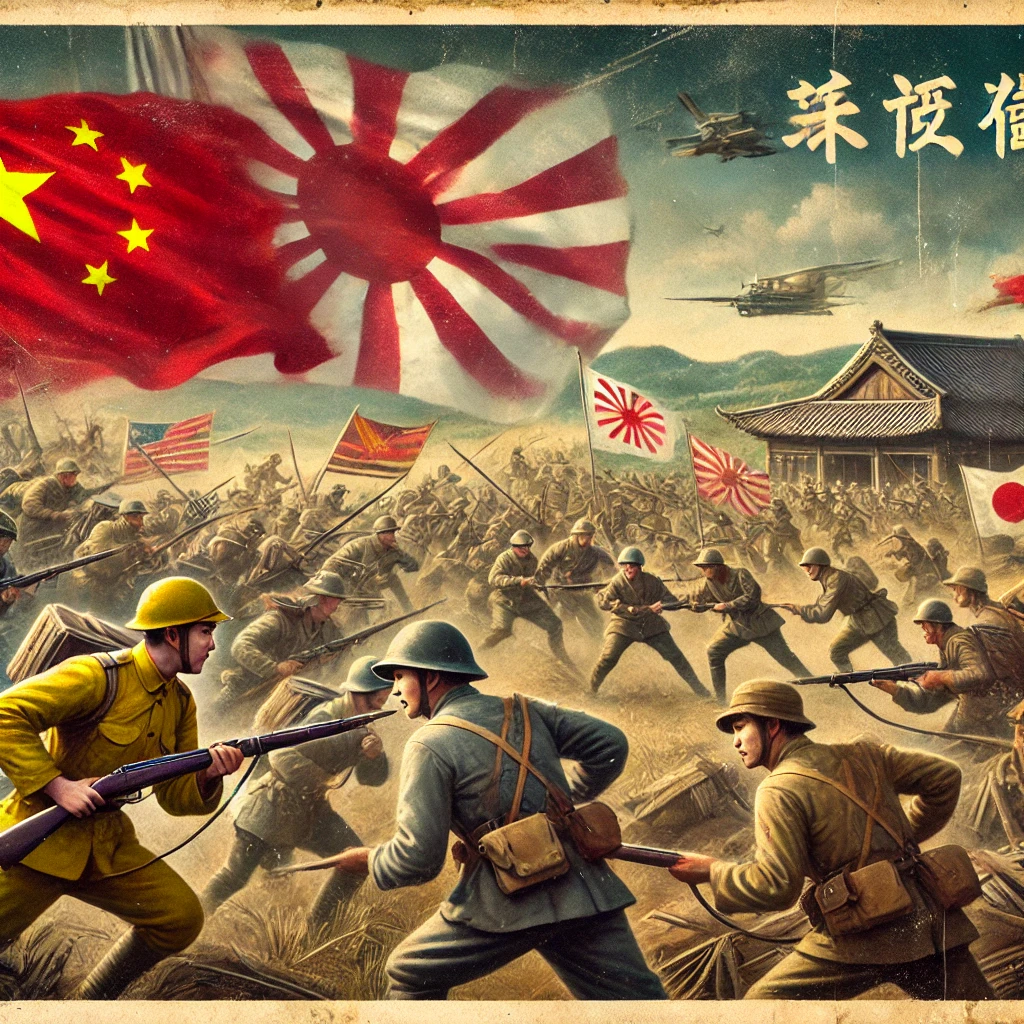The Second Chinese-Japanese War (1937 - 1945)
The dawn of a new Asian order

The Second Sino-Japanese War (1937-1945) was a devastating conflict between the Republic of China and the Empire of Japan, which not only devastated Asia but marked the prelude to World War II in the Pacific theatre - Image generated with AI
The Second Sino-Japanese War (1937-1945), fought between the Republic of China and the Empire of Japan, was a devastating conflict that affected Asia before the start of World War II, also serving as its precursor in the Pacific theatre.
On 7 July 1937, the Marco Polo Bridge incident marked the beginning of hostilities between Japanese and Chinese forces, which initially involved only a clash between patrols, but soon turned into all-out war. The Japanese forces were better armed and trained and advanced rapidly, capturing cities such as Shanghai, Beijing and Nanjing within months. The latter became infamous for the massacre of civilians by Japanese soldiers. Women and children were not spared.
Despite the rapid Japanese advance, the Chinese forces did not surrender. The Chinese nationalist government, led by General Chiang Kai-shek, retreated inland, abandoning the coastal cities to their fate and establishing a new capital at Chongqing. At the same time, Mao Zedong's Chinese Communist Party led an uncontested guerrilla war against the Japanese forces, gaining the support of the population.
The conflict was marked by unprecedented atrocities and devastation: millions of Chinese civilians and soldiers died from violence, starvation and the new techniques of total war, such as carpet bombing. Japanese air raids were heroically met, even with the help of a group of American volunteer pilots, the 'Flying Tigers', who joined the anti-Japanese resistance even before the US entered the war, flying P-40 planes decorated with the mouth of a shark.
Despite ideological differences, Chang Kai-Shek's Nationalists and Mao Zedong's Communists joined forces to repel the enemy. After the attack on Pearl Harbor, the Americans went to war against Japan and China joined the Allies, marking a further turn in the conflict.
The conflict ended only with Japan's surrender in 1945, following the atomic bombings of Hiroshima and Nagasaki.
Rana Mitter. La guerra della Cina con il Giappone, 1937-1945: La lotta per la sopravvivenza. Einaudi, Torino, 2015.
Sito: Britannica, T. Editors of Encyclopaedia. "Second Sino-Japanese War." Encyclopedia Britannica, August 1, 2024. britannica.com (consultato novembre 2024)
2025-10-09
Francesco Toniatti
